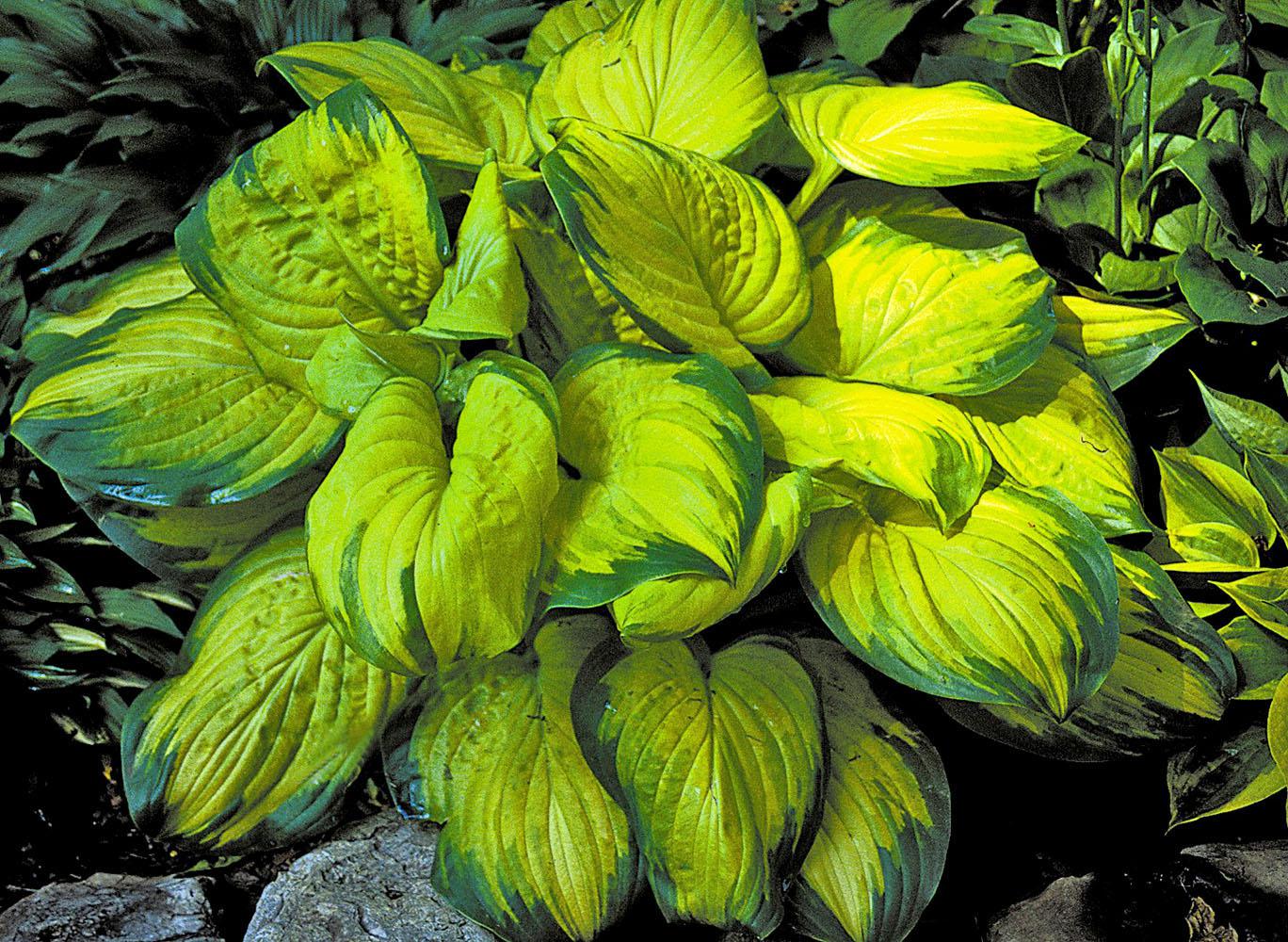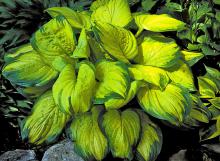Information Possibly Outdated
The information presented on this page was originally released on January 26, 2006. It may not be outdated, but please search our site for more current information. If you plan to quote or reference this information in a publication, please check with the Extension specialist or author before proceeding.
Stained Glass selected 2006 Hosta of the Year
By Norman Winter
MSU Horticulturist
Central Mississippi Research & Extension Center
Rains, especially those on recent weekends, have been so plentiful that about all we can do is make plans for the spring planting season. I'm past ready to prepare beds for a new hosta I want to try called Stained Glass.
Stained Glass looks to be the hottest hosta in the upcoming season as the American Hosta Growers Association has chosen it as the 2006 “Hosta of the Year.”
Many say this is the best new hosta to hit the market in the last decade. Considering all of the great hostas, this is quite a compliment. Guacamole, another Hosta of the Year, was my previous favorite. Stained Glass is a sport or mutation from this great selection.
Stained Glass has brilliant shiny golden foliage surrounded by a 2-inch wide, dark-green margin. It is an incredibly vigorous and sun-tolerant grower, making a 3- to 4-foot wide clump. It is topped in late summer with large, very fragrant, light lavender flowers. Stained Glass multiplies rapidly and is easy to divide.
Perhaps this talk of Stained Glass and Guacamole makes you want to try them, but you are unfamiliar with hostas. Put your mind at ease. These plants are among our best perennials. We grow them mostly in the shade or filtered light garden, though some can take more sun than others.
The hosta is in the lily family and has the common name of Plantain Lily. Because of their lush foliage, you will swear they are from a South Pacific Island. They are unbelievably cold hardy all the way to zone 4, but rest assured their beauty and leaf texture will add a tropical flair to the garden.
Instead of the tropics, hostas come from Japan, Korea and China, and there are about 40 species. There are thousands and thousands of varieties and hybrids, making it the collector's dream plant.
When spring finally arrives, you will be surprised how many varieties your local garden center has. In addition to Stained Glass and previous winners like Patriot, you will find those with gigantic leaves like Sum and Substance and those with blue leaves like Bressighan Blue and Hadspen Blue. There will be every pattern of variegation you could imagine.
The tropical look of Stained Glass and other hostas lets them combine wonderfully with shrubs like the Fatsia and other foliage plants like ferns and grasses. They also work well with bananas, elephant ears and cannas.
Stained Glass will look incredible with lavender or purple-colored impatiens. The same light, water and soil requirements make them good companion plants.
They also make great border plants for woodland trails, and their leaves look handsome in contrast with pine straw mulch and the new red-dyed mulch.
Whether you choose Stained Glass or some other hosta, the bed should be rich in organic matter, so incorporate 3 to 4 inches of humus or compost to improve drainage and aeration.
While tilling, add 2 pounds per 100 square feet of a 12-6-6 slow-release fertilizer with minor nutrients. Plant at the same depth they are growing in the container, placing the crown of the plant slightly above the soil line. Add a good layer of mulch after planting.
Hostas need to be watered during dry periods and fed with light applications of fertilizer every six to eight weeks. The one problem gardeners have with hostas is that slugs like to munch on them. You can help the situation by not watering in the afternoon.
Hostas can grow for years before they need dividing. In fact, it is best not to divide for at least three years.
I hope you will try Stained Glass or another one of the other great hostas. I promise you will get hooked once you start.








